Artists are supposed to be inspiring. But if you assume that curators are rather more prosaic, then meet Hans Ulrich Obrist (Huo to his friends), the artistic director of the Serpentine Galleries in London, who, an awful lot of art-world insiders would argue, is the single most influential figure on the contemporary scene.
I go to meet him in his Serpentine office. His dress is elegantly casual: an unstructured linen suit, with big statement spectacles and baseball cap. “I don’t think about what I wear,” he says. “He probably doesn’t have to,” a friend confides. “He gets showered with designer clothes.” He used to be a model for Brioni, remembers his erstwhile co-director, Dame Julia Peyton-Jones. “The suits he was given to wear at the Serpentine summer party came to be quite a thing.”
Yet for all that his party togs might be remembered as fabulous, the man I now meet has a far from flamboyant air. His once mad-professorish hair is receding. But beyond the high brow lies a brain like a factory. It hums with ideas.
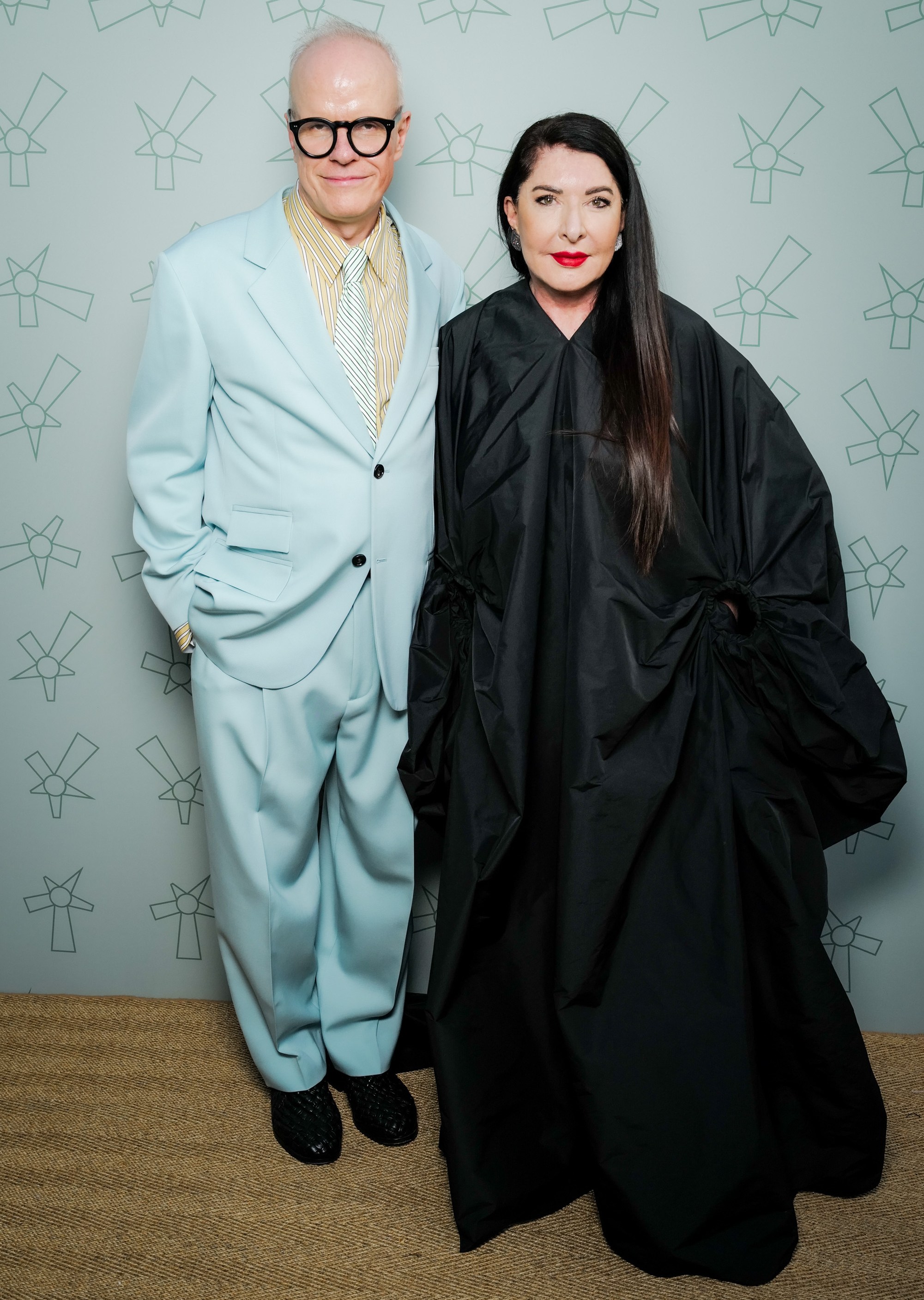
With Marina Abramovic at the Serpentine Galleries in June 2024
GETTY IMAGES
“Hans Ulrich is fast, sleepless, adventurous, obsessed, possessed … volcanic, hurricanic, mind-blowing, surprising, limitless,” says Marina Abramovic, the grande dame of performance art, in her 2010 video portrait of Obrist. He is “completely different to anyone else”, she once told me: quite an accolade coming from an artist who has been strung up, cut and screamed at during her career. “He doesn’t do half the things — like celebrate Christmas, take holidays, sleep — that are normal for 99 per cent of the world,” Peyton-Jones agrees.
Pausing to draw breath, it turns out, is one of those normal things Obrist doesn’t do. His conversation pours out in a torrent of German-accented English — a stream of names and quotations.
• Read art reviews, guides and interviews
The 57-year-old’s interests don’t stop at art — nor does the sort of art he is interested in stop on the museum wall. It could just as likely take the form of a video game or a scientific experiment. It may leave nothing more tangible behind than one of the hundreds of catalogues to which Obrist, in the course of his career, has contributed. He studied economics and ecology at university — “I didn’t want to study art history because I already devoted my days and nights to art” — but, a passionate autodidact (skyscrapers of books rise from every spare surface of his office), his education didn’t end there.

Obrist in his office at the Serpentine
JUDE EDGINTON FOR THE TIMES MAGAZINE
Obrist can discourse on anything: the ethnographic philosophies of Édouard Glissant (“One of my fundamental mentors, whom I read very regularly”); Heinz von Foerster’s theories about cybernetics; the fascinations of handwriting (the subject of one of Obrist’s many ongoing projects); the possibility of cuttlefish having extraterrestrial origins. How many other people, when asked what music they are listening to, reply with the name of a mystical medieval nun? “If I had to fill out a form stating my religion, I would write Hildegard of Bingen,” he announces happily. Clearly, amid the polymathic medley of facts there is room too for faith — albeit not in any conventional form. For more than 20 years he consulted a tarot reader (the same one, incidentally, used by the Italian film director Federico Fellini). “In the early Nineties, she predicted that I would meet someone from South Korea,” Obrist says. “Shortly afterwards I met my partner [the artist Koo Jeong A from Seoul]. We’ve been together ever since.”
Given his knowledge, you might expect an encounter with this curator to be daunting. “Most of us don’t have a clue who he’s talking about an awful lot of the time,” Peyton-Jones confesses. “He is utterly exceptional. But he’s also modest. He’s interested in everybody. He’s one of the most emotionally intelligent people I know.” (Peyton-Jones worked alongside him for more than a decade. He is the godfather of her child.) But, one of Obrist’s fellow museum directors confides, “I’ve come to recognise that stricken look on people’s faces when they find themselves in his company. It’s the look of a rabbit in the headlights of a glaring intellect.”
• The expert’s guide to buying, enjoying and talking about art
Now, however, as Obrist publishes his latest book, Life in Progress, we get the chance to meet him on less frenetically intellectual terms. This is, he says, the first of many books that is personal. Penned at the behest of a publisher friend, it invites us to discover the person behind the polymath.
Obrist was born in 1968, the only child of an accountant father and a primary school teacher mother, brought up in the quiet Swiss town of Weinfelden, close to the border where Germany, Switzerland and Austria meet. He speaks five languages: his childhood Swiss German as well as French, Italian, Spanish and English, with a smattering of Korean thrown in although, when he and Koo Jeong A are together, they speak French.
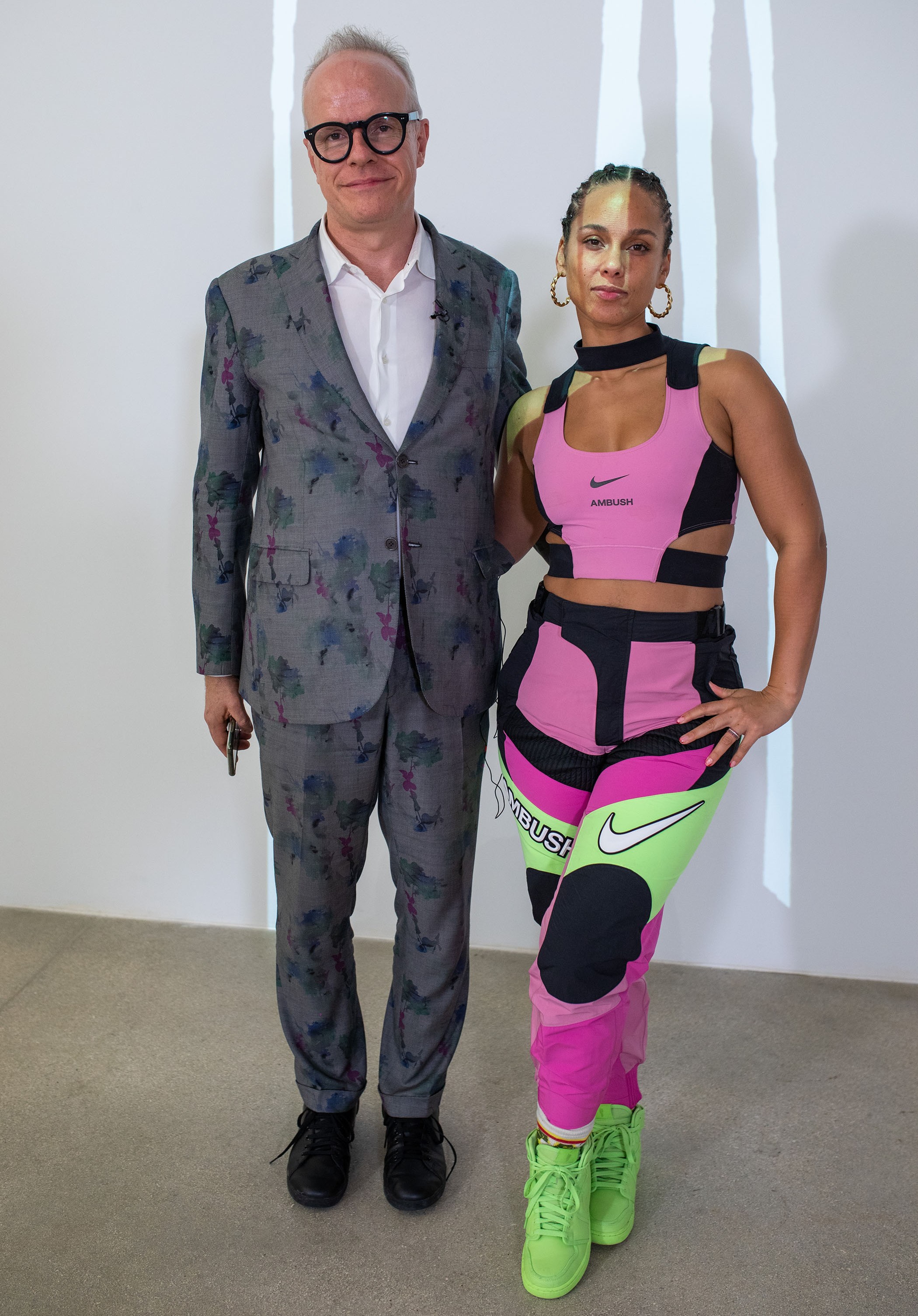
Obrist with Alicia Keys in Miami, 2021
SETH BROWARNIK/STARTRAKSPHOTO.COM
“How does our destiny take shape?” This is one of the “mysteries”, he writes, that his new book probes. His future was significantly moulded, he explains, by a car accident that happened when he was six. Knocked down in the street by a car, he was nearly killed. The trauma left its mark. His right elbow remains crooked at a spider-leg angle. But far more profound was the mental legacy.
Months of being immobilised in hospital fostered Obrist’s obsession with books. “I was never a child who liked playing,” he says — though don’t assume he is not athletic. He was a tennis star and skiing champion, Peyton-Jones says, though he doesn’t mention his sporting prowess in the book. “Whenever he decides to do something, he does it 1,000 per cent and continues until he excels.”
• The tiny rural gallery that’s landed a baroque masterpiece
“What I wanted to do was to learn,” Obrist says. “I wanted to know everything, like Flaubert’s Bouvard and Pécuchet. I spent all my pocket money on books.” They have remained pretty much his only possessions. “I’ve never collected artworks; I live too nomadic a life. If I need a car or a flat, I rent it. I’m not interested in collecting anything other than ideas.”
Just as importantly, his childhood accident instilled a dramatic sense of urgency. It was touch and go whether he would survive and whether, if he did, his condition would improve. “Hovering between life and death, I was full of a feeling that each day could be my last. Most people don’t get to rub shoulders with death until later.” But Obrist, from the moment he left hospital, was possessed by a conviction that he had to “get things done”.
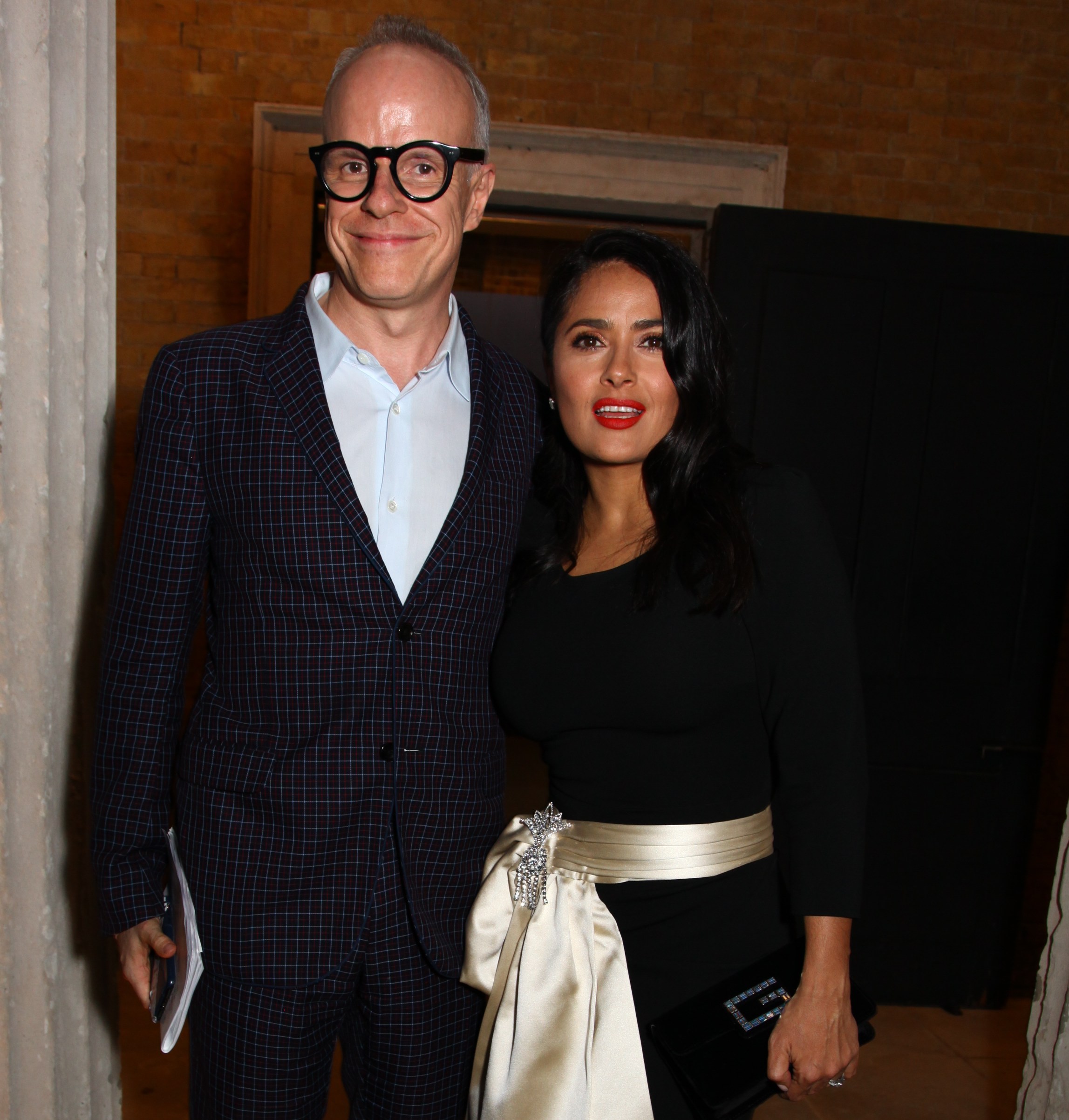
With Salma Hayek at the Serpentine Galleries in 2018
CAMERA PRESS
The man in a hurry, his parents nicknamed him. He began to dedicate himself “totally, almost feverishly” to art: driven by his accommodating parents to endless exhibitions; curating displays of art postcards in his room (“I’d organise them according to criteria: by period, style or colour”); conducting the first of the many hundreds of artist interviews that he has now recorded; planning to create his own version of the art scholar Aby Warburg’s fabulous Mnemosyne Atlas.
Mesmerised by a show by Peter Fischli and David Weiss, he got hold of their number and, calling them from a coin-operated phone in his school, asked to visit their studio. The Swiss duo — persuaded by the enthusiasm of this 17-year-old — agreed to the encounter, which for Obrist turned out to be “probably the most crucial visit of my life. I decided what I wanted to do with my life: to find a way to be useful to art.”
Armed by Fischli and Weiss with introductions to their many artist friends, who in their turn armed him with further introductions, Obrist started travelling, sleeping on night trains at first because he couldn’t afford hotels, although now he does so because he finds them “amazing places to think”. “I went from one city to the next, inspired by the monks in the Middle Ages who carried knowledge from one monastery to the next.”
He collected catalogues and gossip and countless artistic connections. Think of the name of any contemporary artist, whether incredibly famous or off-the-wall radical, and Obrist will probably have met and interviewed them — multiple times. His thousands of hours of recordings are preserved for posterity in his ever expanding archive. He “loves” to make studio visits. “I’ve done one every week since the age of about 13.”
In 1991 he curated his first exhibition — in his kitchen. He had never made so much as a cup of coffee or heated a tin of soup in it, he confesses. The only time he had tried to cook — potatoes, apparently — he got a call in the middle and, forgetting the pan was on the stove, had set off on a studio visit. The fire brigade arrived in his absence. After that, his kitchen had only been used to house books.
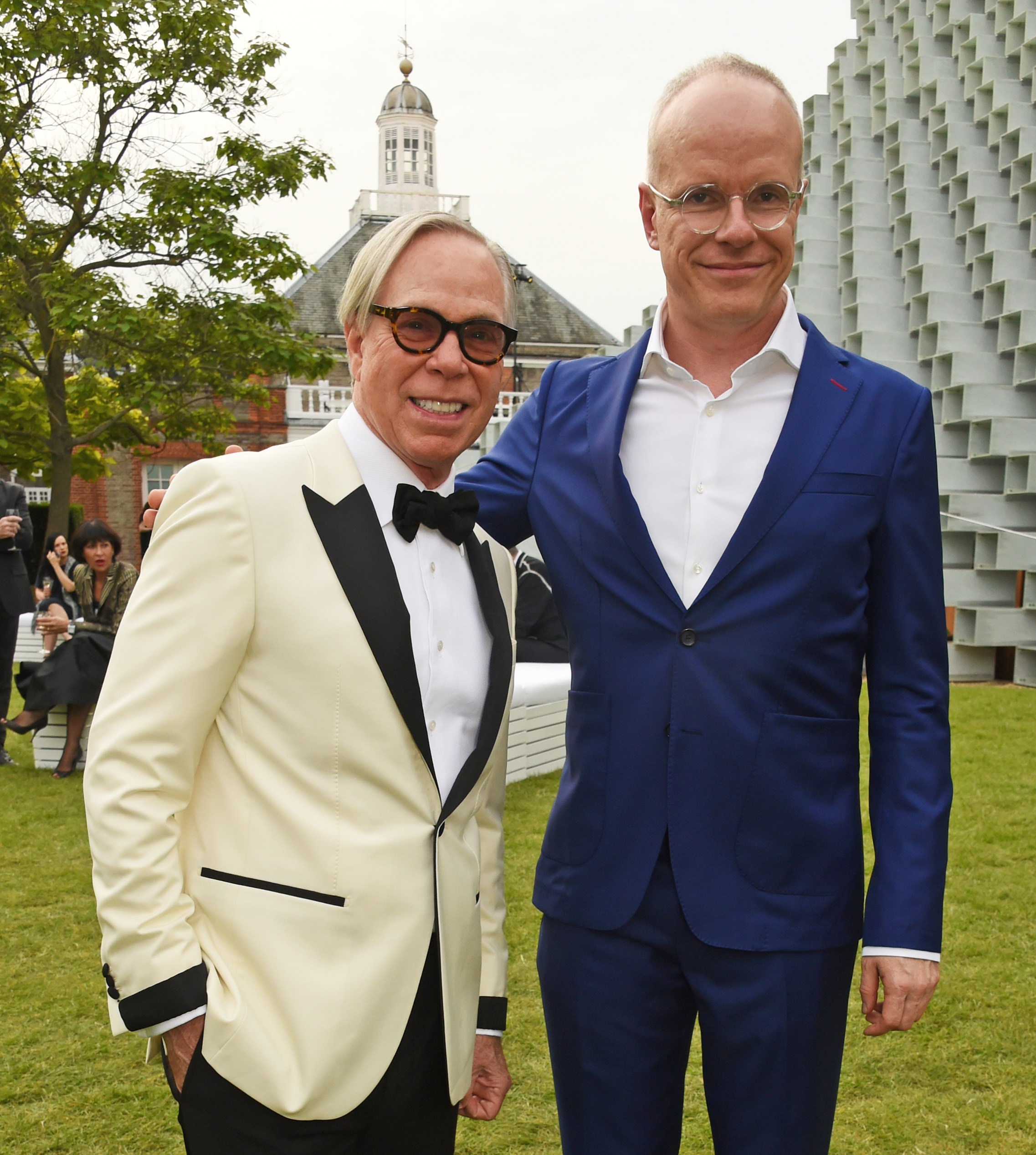
At the 2016 Serpentine Summer Party with co-host Tommy Hilfiger
GETTY IMAGES
Everything today is curated: outfits, menus, social media feeds, even salads. But when Obrist informed his parents that he wanted to be a curator they thought it was something medical, he remembers. Throughout the Nineties he worked freelance, tirelessly trotting the globe, from museum to gallery, before eventually taking a job in Paris. Going by the whimsical title of “head of migratory curation”, it could almost have been designed with this restless figure in mind. He never checks in his luggage. You might stumble across him in the furthest reaches of China with all his possessions in a plastic bag, a friend says. Then in 2006, Peyton-Jones invited him to become her co-director at the Serpentine. She moved on a decade later, but he stayed.
His new book gives an idea of the eye-stretching variety of exhibitions he has staged, of the mind-expanding variety of projects he has pursued. How on earth has he found the time for it all, I ask. The question is meant as a mundane pleasantry. But Obrist immediately embarks on an earnest explanation. “As a boy, I never wanted to go to bed. I wanted to stay up; to keep bombarding the adults with endless questions.”
Later, as an adult, in his ongoing anxiety “not to lose precious minutes”, he says, he experimented with what he calls “the da Vinci rhythm” — sleeping for 15 minutes in every 3 hours. It worked quite well apparently. He wrote his first books like that. But it didn’t fit with office life, so he turned to the novelist Honoré de Balzac for inspiration. Balzac drank about 50 cups of coffee a day. “That turned out to be unsustainable,” admits Obrist, who now monitors his health with the same rigour he brings to every other pursuit.
He jogs first thing every morning, has replaced coffee with matcha and is gluten and lactose free. He eats vegetables or salads for every meal (including breakfast) and, where he used to sleep for only five hours, he now manages seven. But he has engineered other ways of ensuring that time is not wasted. He employs two assistants, one for the day and one the night, working with the latter from ten until midnight and then sleeping until six while the assistant continues on.
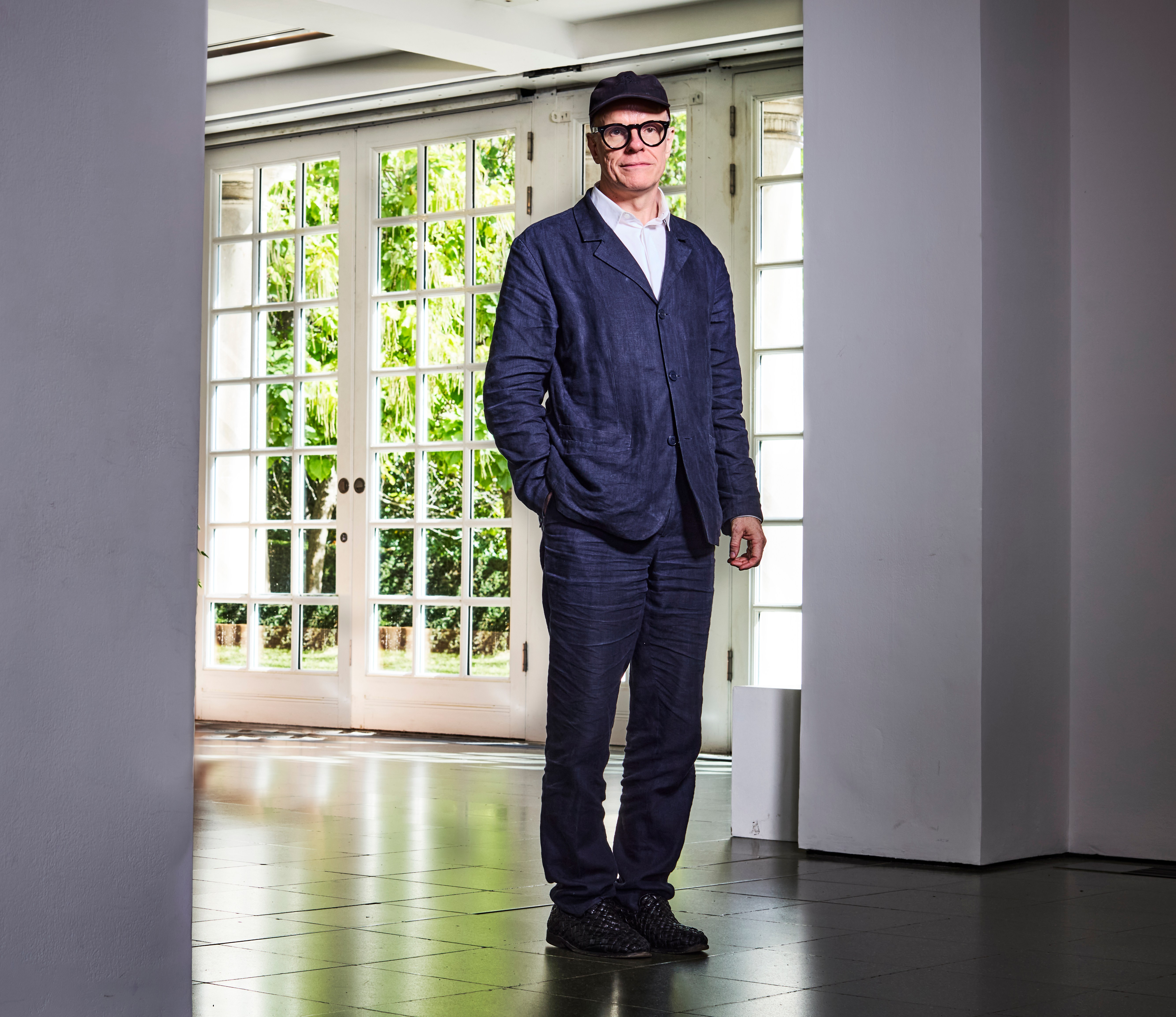
He tried “the da Vinci rhythm” – only sleeping for 15 minutes in every 3 hours. “That turned out to be unsustainable”
JUDE EDGINTON FOR THE TIMES MAGAZINE
Ten years ago, he instituted his Brutally Early Club. “I always found it disappointing that I had to plan meetings with friends so long in advance, so I decided to come up with a time when nobody would have a prior schedule.” Meetings are held at 6.30am; and for younger artists, spilling out from nightclubs in the small hours, Obrist gets up even earlier to meet them before they finally go to bed.
What makes art so important to him? “Art is the highest form of hope,” he says, quoting his friend Gerhard Richter.
Art is also a crucial repository of history, he believes. “It’s important that we don’t disconnect contemporary art from the past.” At the same time, he stresses, “Art is conveying information towards a new generation.” He is optimistic about the possibilities of technology. He is nothing if not enthusiastic and, if he doesn’t rate something, he won’t make his opinion public. He will just find another work that thrills him and rave about that instead.
Why is he not an artist himself? His friend Philippe Parreno, the French visual artist, once said, “For me, there is no difference between talking to him and talking to other artists. I am engaged at the same level.” Obrist, however, as generous as he is humble, replies, “I have just always seen my work as enabling artists. Having seen how transformative art can be and how important it was to me to find mentors, I have always wanted to find ways of supporting people at the beginning of their trajectory.” And, because he first stumbled across art outside a gallery context — in the work of a Zurich graffiti sprayer — he remains convinced that “the most important thing is to bring out art from behind the doors of the gallery and into society. Every corporation should have an artist in residence,” he says, “and practitioners from outside the art world, scientists and philosophers, technologists and the like, should be brought into the world of exhibitions.
“Amazing things can happen when you bring things together, pool knowledge, build bridges, let different disciplines meet,” Obrist says. The Russian art critic and ballet impresario Sergei Diaghilev was one of his fundamental inspirations. “He was the reason I became a curator,” he says. “He brought music, painting, architecture, choreography and fashion together. Today, though, what Diaghilev did wouldn’t happen with ballet; it would probably happen with a video game.”
Art is the gateway to possibility, Obrist believes, and his aim, it would seem, is to chivvy the rest of us through it. Whenever he interviews an artist, he asks them about their greatest unrealised projects. Answers range, apparently, from Parreno’s dream of building a bridge to the moon to Gilbert & George’s plan to stand in as figures in a Christmas crib. Obrist’s own great unrealised project is to mount an exhibition of all the other unrealised projects. “Maybe one day I will do it. It is possible, of course,” he says.
Life in Progress by Hans Ulrich Obrist (Allen Lane, £20) is published on October 2. Order from timesbookshop.co.uk or call 020 3176 2935. Free UK P&P on online orders over £25. Discount for Times+ members

